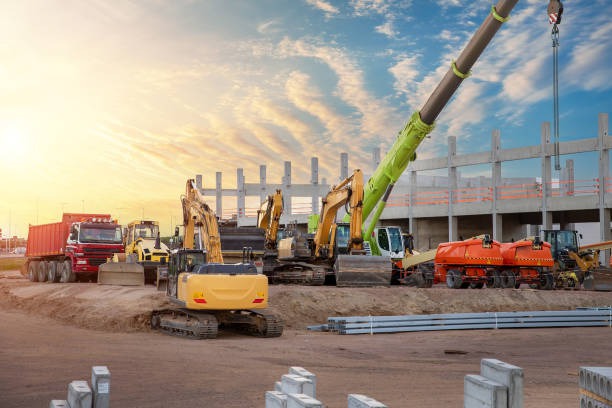Budgeting Tips for Custom Home Projects: How to Avoid Unexpected Costs
Do you dream of having a home exactly how you envision it? Creating a custom home should be exciting, but it comes with challenges—especially in managing the budget. Before you can enjoy your newly built paradise, there’s one crucial thing to tackle: the budget. Taking a strategic approach to budgeting can help avoid those sneaky, unexpected costs that tend to pop up.
1. Start with a Clear Vision
Before discussing detailed finances, it’s essential to get a solid idea of what you want. Imagine your perfect home. What are the “must-have” features? Do you fancy a grand kitchen or a cozy fireplace? Having a clear vision helps streamline decisions and aligns your budget with your priorities. This way, you’ll minimize indecision costs—those little expenses that arise from changing plans.
2. Research Thoroughly
Next, dive into research. The more you know, the better equipped you’ll be for potential pitfalls. What do similar projects cost in your area? Local costs can vary, so understanding regional pricing is crucial. Find out about contractors, materials, permits, and fees. Reaching out to custom home builders in Annapolis Valley could offer valuable insights into local pricing norms.
Ask the Right Questions
-
What are the local building regulations?
-
Are there seasonal factors affecting prices?
-
What materials will withstand the local climate best?
3. Setting a Realistic Budget
Setting a budget isn’t just about limiting expenses; it’s about smart allocating. A well-planned budget hones focus on what’s essential without depriving your project of the necessary quality and detail.
Include a Buffer for Contingencies
Unplanned expenses can pop up anytime, throwing even the best-laid plans off track. The trick lies in anticipating them. Adding a contingency buffer—about 10-20% of your total budget—can help cushion the shock of any surprise costs.
Break Down Costs
Instead of seeing your budget as a giant chunk, break it into smaller, manageable parts:
-
Design and Architecture
-
Permits and Legal Fees
-
Site Preparation
-
Materials
-
Labor
-
Finishing Touches
This breakdown offers clarity and helps you identify where cuts can be made if necessary.
4. Working with Professionals
No matter how detailed your plan is, working with the right professionals makes all the difference. They bring expertise, experience, and, often, unexpected insights to your project.
Choose the Right Team
When hiring your construction team, it’s vital to look beyond the cost. Consider their reputation, commitment to quality, and communication style. Engage with previous clients to ascertain their satisfaction levels. Remember, a cheaper bid can sometimes be more expensive if errors arise.
Establish Clear Contracts
Your relationship with contractors should be cemented with clear contracts. These should cover all aspects: timelines, costs, roles, and conflict resolution processes. Both parties clearly knowing where they stand minimizes misunderstandings and unexpected charges.
5. Being Prepared for Permits and Legalities
Regulatory requirements aren’t the most thrilling part of custom home building, but they’re unavoidable. Properly managing them can save headaches and costs down the line.
Navigating Building Permits
Think of permits as necessary checkboxes. They ensure your home meets local safety and preservation standards. Begin the application process early to sidestep delays. Moreover, understanding the permissions required to diminish the likelihood of fines or reconstruction.
Local Zoning and Codes
Understanding your local zoning laws is just as important. Does your desired project fit into neighborhood standards and codes? Clashes here can cause costly redesigns and delays.
6. Efficient Material Selection
Materials form a massive part of any custom home’s budget. Hence, selecting the right textures and finishes involves a delicate dance between aesthetics and expenditure.
Prioritize Quality Over Quantity
Cheaper materials often lead to higher long-term maintenance costs. Investing in high-quality, durable materials ensures your custom home ages gracefully. Weigh the upfront costs against the lifespan of options available.
Consider Reclaimed Materials
Reclaimed materials offer both eco-friendly advantages and reduced costs. Think wooden beams, vintage tiles, or bricks. They add character to your home and save money. Plus, they tell a story, bringing a unique touch to your living spaces.
7. Save with Smart Site Preparation
The land on which you build can significantly impact your budget. Site preparation involves several factors—from soil quality to land grading.
Proper Assessment is Key
Before starting construction, ensure the land is assessed accurately. Hire specialists who can recommend tailored solutions to unique site challenges, such as drainage issues or uneven terrain.
Ditch What’s Unnecessary
Minimize excess work in site preparation. Discuss with your team what’s essential and what’s optional. Some features might seem crucial but aren’t necessarily needed, leading to savings.
8. Engage with Technology
In this tech-advanced age, digital tools can make budgeting and planning smoother and more accurate.
Using Budgeting Software
Various apps and software solutions can help track expenses, forecast costs, and manage invoices. Their user-friendly interfaces make it easier to stay updated on budget utilization.
3D Modeling and Visualization
Technology has paved the way for better visualization and fewer budgeting surprises. Using 3D visualization tools can help identify potential changes necessitating cost adjustments before construction begins.
9. Communication is Crucial
The best budgeting tool remains transparent communication—between you, your builders, and project managers.
Regular Meetings and Updates
Schedule regular meet-ups with your construction team to ensure everyone is on the same financial page. Any anticipated changes or issues should be communicated swiftly, allowing adjustments before costs escalate.
Encourage Feedback
A two-way communication channel is beneficial. Encourage feedback from contractors and subcontractors. They might suggest practical solutions or highlight potential budgetary concerns early on.
Invest in Regular Walkthroughs
-
Assess project progression
-
Identify early signs of budget creeps
-
Establish mutual accountability among teams
Learning from Others’ Experiences
Listening to other homeowners’ stories can offer valuable insights into avoiding unexpected costs.
Learning from Mistakes
Chat with others who’ve already embarked on this journey. What were their biggest hurdles? How did they navigate surprise costs?
Attend Local Builder and Homeowner Events
Events allow direct interaction with industry professionals and fellow homeowners. Sharing experiences can offer fresh perspectives and strategies to avoid financial pitfalls in your custom home project.
Building your dream custom home without unexpected costs is achievable with careful planning, clear communication, and the right team. Each step is crucial, from assessing materials, excavation services, and site preparation to efficiently coordinating with your construction team.
Final Thoughts
Building your dream custom home while avoiding unexpected costs requires meticulous planning, clear vision, and open communication. Research thoroughly, set a realistic budget with contingencies, and work with reputable professionals. Efficient material selection and smart site preparation play pivotal roles, as does staying informed about permits and zoning laws. Leveraging technology and learning from others’ experiences further smoothens the process, ensuring a successful, cost-effective custom home project.




